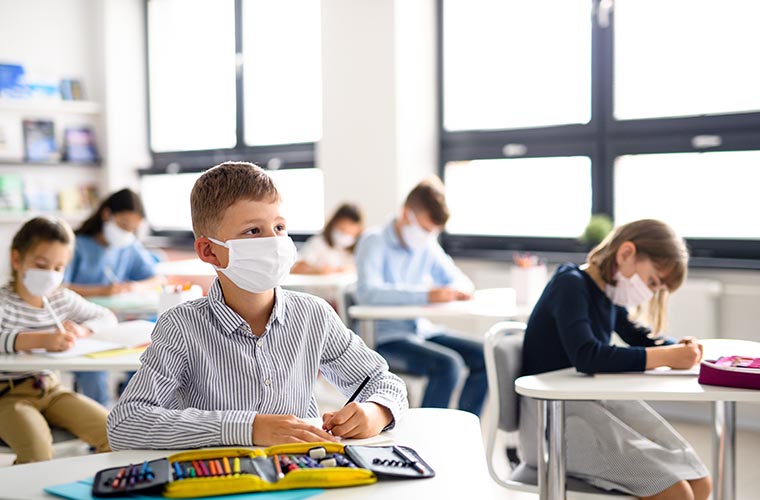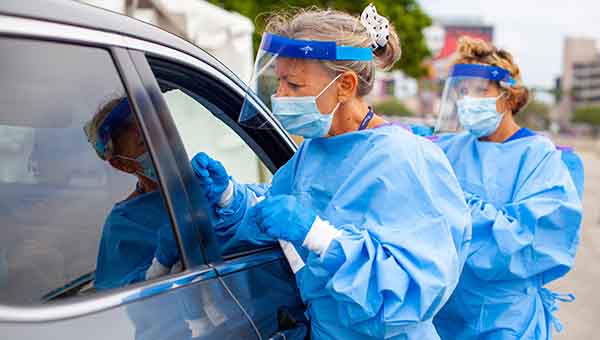Keeping Kids Safe from COVID-19 at School

With a new school year underway in the midst of a rise in variants of COVID-19 that are more contagious, many families are now facing the question of how to keep their kids safe in the classroom.
BayCare Pediatric Service Line Medical Director Dr. Christina Canody provides answers to common questions about COVID-19 and offers recommendations to help students, families and school staff stay healthy.
What is causing the current increase in COVID-19 infections?
As the COVID-19 virus passes from person to person, it has the ability to mutate into new variants. The main culprit of the current outbreak is believed to be the Delta variant, a highly-contagious form of the of the virus that now accounts for most of the cases in the country (as of Aug. 11, 2021). It’s much more transmissible because it multiplies more rapidly in people’s respiratory tracts, creating higher viral loads in infected individuals and making them infectious sooner. The rise in infections has gone up exponentially because of this. For a list of frequently asked questions about the Delta variant, click here.
Are we seeing a rise in pediatric cases?
There has been a spike in the number of children diagnosed with COVID-19 across the state. In fact, children now account for about 1 in 5 new cases in Florida. At BayCare, pediatric admissions related to COVID-19 doubled during the last 30 days and we anticipate that these numbers will continue rise. Currently across Tampa Bay, the positivity rate for all ages is above 20 percent.
What can families do to protect themselves?
For adults and children over age 12 who are eligible, vaccination is one of the best measures to protect against the COVID-19 infection. While it’s still possible to get the infection after vaccination, it drastically reduces the chance the illness will be life-threatening. It’s essentially a safety net. When we wear seatbelts in a vehicle, we know it doesn’t mean we’ll never be involved in an accident. But if we are, our chances for serious injury are decreased by wearing a seatbelt.
Children under 12 who are not yet eligible and older children who remain unvaccinated can return to school safely when complying to other protective measures such as wearing a mask, social distancing and frequent handwashing.
- Wearing a mask when indoors or in a crowded setting helps contain any potentially infectious droplets that are released when breathing, speaking or coughing. When students, teachers and staff wear a mask and wear it correctly - fit snugly around the nose and mouth – they protect others as well as themselves.
- Since the virus that causes COVID-19 is most often spread person to person, physical distancing remains important. Staying at least 6 feet apart can help prevent the transmission of the virus. Recent research suggests that a distance of at least 3 feet apart can have similar results provided everyone in the group is properly wearing a mask and have no symptoms of illness. The vaccine provides a strong layer of protection from becoming seriously ill, but a person can be asymptomatic and potentially infect others.
- Good hand hygiene is another important step in preventing the spread of all infectious illnesses. This includes frequent handwashing, refraining from touching your face and sneezing or coughing into your elbow instead of your hands.
- Children or school staff should stay home when they have signs of any infectious illness.
- Protect those around us who can’t get vaccinated by following the steps above.


